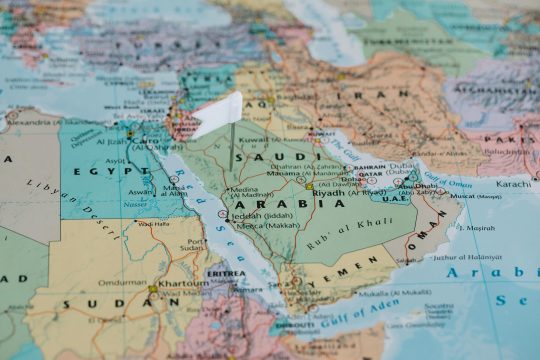It’s no secret that the Gulf Cooperation Council (made up of countries Saudi Arabia, United Arab Emirates, Qatar, Oman, Kuwait, and Bahrain) is seeing an unprecedented growth trajectory in its construction, development, and real-estate sectors. After a comparatively modest 1.6% growth in 2024, the region is expecting a sharp upswing, with economic growth expected to hit 4.2% in the coming year.
With iconic skylines, luxury tourism, shopping destinations, relatively low taxes, and world-class entertainment, it’s no surprise that cities such as Dubai, Riyadh, and Doha are anticipating substantial increases in their residential populations over the next decade. As countries across the Gulf aim to diversify away from hydrocarbons, massive infrastructure and real estate projects are central to their economic strategies.
GCC mega-developments and smart cities such as Saudi Arabia’s NEOM and The Line, the UAE’s Modon-led infrastructure platforms, and Qatar’s Simaisma resort district are just a few high-profile examples of the hundreds of districts, suburbs, and entirely new cities taking shape across the region. These ambitious ventures are not only redefining the landscape but also creating new challenges and opportunities for security infrastructure and smart city technologies.
Security as a Foundation For Growth in the GCC Construction, Development and Real Estate Sector
A defining feature of the GCC’s appeal, especially for international investors and high-net-worth individuals, is the perception of safety. According to a recent report, GCC countries are ranked as some of the safest in the world, due to a combination of low crime rates, strict laws, smart policing, and significant investments in security systems. High-quality, interconnected security technologies are not just a requirement, but a critical foundation for sustained economic growth and global reputation.
However, maintaining world class security in a fast-moving technological landscape isn’t always easy. As new devices, software platforms, and smart technologies enter the market, many organisations often find themselves juggling multiple proprietary systems that don’t communicate effectively with each other. This can lead to gaps in security coverage, inefficiencies in system management, business loss, or increased costs when scaling up or upgrading infrastructure.
How Security Standardisation Protects Reputation
Without a standardised framework such as ONVIF, integrating new security technologies with existing setups becomes complex, time-consuming, and prone to compatibility issues. At the speed in which the GCC construction, development, and real-estate sector is growing, relying on non-standardised solutions can compromise both operational effectiveness, long-term security resilience, and reputation.
Dubai’s “Oyoon” (Arabic for “Eyes”) project exemplifies how integrated, AI-driven surveillance systems can enhance urban safety and efficiency. More than 300,000 cameras across Dubai are linked to one central command room, allowing authorities and agencies to quickly respond to crimes, security issues, traffic incidents, and much more.
For developers and urban planners, Oyoon underscores the importance of implementing interoperable security systems in new projects. By ensuring that surveillance and access control devices can communicate with each other effectively — regardless of brand, developers and authorities can create safer, more responsive environments. This approach not only enhances security but also aligns with the GCC’s vision of smart, connected cities.
Ultimately, for the GCC construction, development, and real-estate sector, ONVIF standards help reduce vendor lock-in, improve system longevity, and lower the total cost of ownership. This is in addition to supporting the creation of scalable, adaptable security systems that evolve alongside the built environment.
Whether it’s integrating video surveillance and analytics into a unified city-wide dashboard, or deploying modular access control solutions across rapidly expanding developments, ONVIF provides the framework to ensure these systems are effective and interoperable from the outset.






